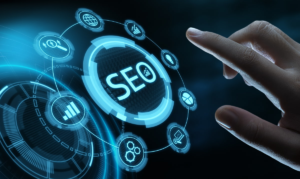Insulation removal is a demanding DIY project that requires the right equipment and strict safety measures. The first step is to clear out the workspace and create a safe working environment. Identify the insulation type and clear out any pest infestations before proceeding. Click the https://www.perthinsulationremover.com.au/ to learn more.
Next, secure the proper equipment – a high-powered insulation vacuum and disposal bags. Finally, follow these structured steps to successfully complete the job:

Insulation removal is a necessary task that homeowners must perform to address issues like moisture, mold, pests or outdated materials. The job involves accessing insulation in walls, attics and crawl spaces and safely removing it without spreading airborne contaminants into the environment. It can also involve addressing safety concerns such as asbestos contamination.
The process starts with securing the right equipment. This includes a powerful insulation removal vacuum, which quickly sucks up the material and sends it to disposal bags. Other essential gear for a successful project includes gloves, eye protection and a mask or respirator to protect against the inhalation of fibers and dust. A ladder is also important to reach the space and a utility knife for cutting. A flashlight may be needed to work in dim areas.
A wire stripper is also helpful for removing insulation from electrical wires. Insulation can cling to and wrap around wires, which poses a fire risk if it is exposed to heat or moisture. This can cause corrosion of the wires and lead to damage and short circuits. A wire stripper can be used to pull the insulation away from the wires and cut it into small pieces for disposal.
It is crucial to select the best vacuum bag for the type of insulation being removed. Insulation removal vacuum bags are specifically designed to handle different types of insulation, from fiberglass to cellulose and mineral wool. They are heavy-duty and have a tight seal to prevent the escape of insulation particles in the event that the bag is torn.
The insulation disposal process can be challenging and dangerous for those without the proper skills. It is best to hire professionals who have the equipment and training necessary for a safe and effective project. Licensed professionals can ensure adherence to strict safety protocols and have the ability to handle a variety of insulation materials, including cellulose, foam and asbestos.
Insulation can be a great way to improve energy efficiency in a home. However, when it becomes old or damaged, it can become a fire hazard and harbor pests and mold. It is critical to address these problems promptly so that the house can stay safe and healthy.
Safety First
Homeowners may need to remove old insulation for a number of reasons, including upgrading to more efficient insulation, addressing pest infestations or mold issues, and repairing damaged areas. Whatever the reason, proper safety and preparedness are key to ensuring that the job goes smoothly and safely. It is important to wear proper protective gear such as gloves, masks, and goggles and to use a high-powered insulation vacuum that has a HEPA filter. It is also vital to ensure that the workspace is sealed off from other parts of the house, preventing the spread of particles and fibers.
It is also a good idea to have a powerful fan and open windows in the workspace to keep air moving, which can help disperse the harmful particles. Regular breaks are recommended to reduce fatigue and to minimize the risk of exposure. It is also important to wash clothing after working and take a shower to prevent irritation of the skin or eyes. Finally, it is vital to avoid contact with any chemicals or sprays used during the removal process and to follow local regulations regarding disposal of the materials.
Professionals who specialize in insulation removal have the training and experience necessary to perform the work safely and effectively. They also have access to specialized equipment that can make the process quicker and more thorough, which can save time and money for homeowners. Additionally, they can address a wide range of insulation types and may be able to offer additional services such as air sealing and mold remediation.
Lastly, professionals who specialize in this type of service know how to properly dispose of insulation and will adhere to local regulations regarding hazardous waste disposal. This can help protect the environment and prevent any legal issues for property owners.
When hiring a professional to handle your insulation removal needs, make sure that they are licensed and insured. Also, ask them to provide documentation of their insurance coverage and local regulations compliance. They should also be experienced with handling different insulation types, including fiberglass, cellulose, and spray foam.
Preparation is Key
When working with insulation, it is important to wear protective gear at all times. This includes gloves, safety glasses, and a dust mask. It is also a good idea to work in a well-ventilated area. This will help to reduce exposure to insulation particles and any potential allergens or irritants.
Another important factor to consider is the disposal of old insulation. This is something that should only be handled by a professional, as it can pose a health risk and can be difficult to manage on your own. Professionals have the knowledge and experience to ensure that all materials are disposed of correctly, following local regulations.
Lastly, it is a good idea to take the time to prepare the work area before starting to remove insulation. This will help to minimize the amount of debris that is produced and make it easier to clean up once the job is done. This may include sealing off vents, covering furniture or valuables, and creating containment barriers to prevent contamination of other areas of the home.
It is also a good idea to cover any exposed pipes, wires, or ductwork before beginning the removal process. This will help to prevent any damage that could occur during the process and ensure that the area is safe for installation of new insulation.
Once the old insulation is removed, it is a good idea to inspect the space for any problems that might be revealed. This can be a great opportunity to address any issues that were previously unknown, including moisture, mold, pest infestations, or structural concerns. It is also a good idea to check the condition of the joists and beams to make sure they are still intact and free from any damage or rot.
Finally, it is a good idea to consider using eco-friendly insulation. Many companies now offer insulation made from recycled materials, such as denim and newspaper. This can be a great way to cut down on waste and reduce your carbon footprint at the same time. In addition, some companies even offer insulation that is made from natural materials such as wool and cork.
Hire a Professional
Insulation is an important part of a well-insulated home, and replacing old insulation can greatly improve energy efficiency and overall comfort. However, it is vital to take the proper precautions when working with insulation remover, and hiring a professional is always the best option.
Insulation professionals are experienced and know how to deal with the unique challenges that come along with this type of project. They also have the right tools to do the job quickly and efficiently, which will save homeowners both time and money.
Professionals can help to identify signs of poor insulation and make recommendations for the best course of action. These include uneven indoor temperatures, insufficient heat retention in winter and excessive cooling in summer, and the presence of pests or rodents within walls. These issues can indicate that existing insulation is not performing as it should, and replacing it will significantly reduce utility bills and create a healthier indoor environment for the whole family.
The process of removing old insulation is lengthy and laborious, and there are various steps that need to be taken into consideration. This includes clearing out the attic or wall space, preparing and protecting yourself, and ensuring that the insulation is properly disposed of. Hiring a professional can save you the hassle and inconvenience of doing it yourself, while also ensuring that the work is carried out to the highest standards.
The best time to hire an insulation removal service is before you start the project. This will allow the professionals to assess the condition of your current insulation and determine if it is suitable for replacement or if further investigation is required. They will also have the correct disposal methods in place and can ensure that any asbestos materials are handled in a safe and responsible manner. Contact your local insulation company today to receive an estimate and to schedule an appointment.








